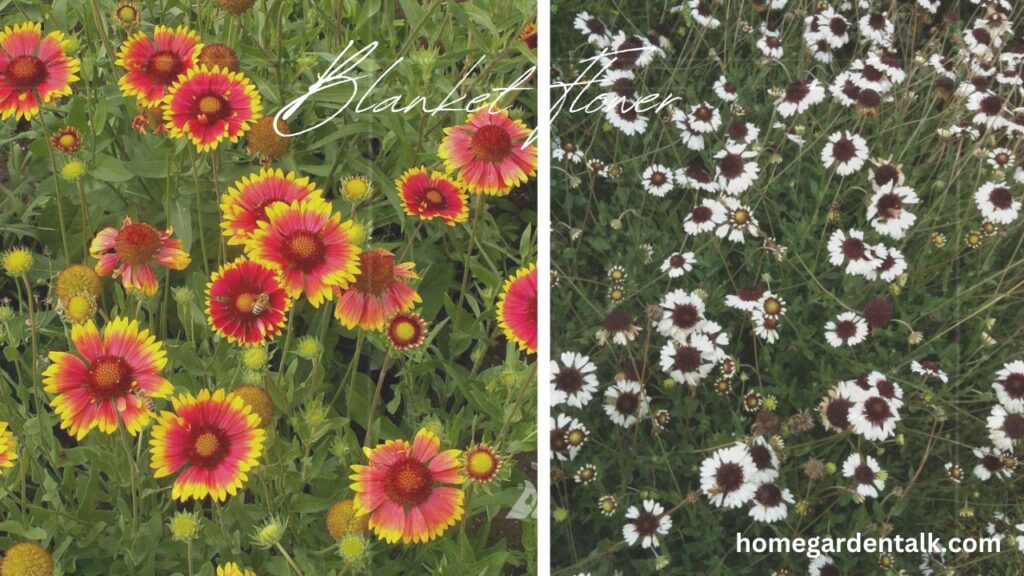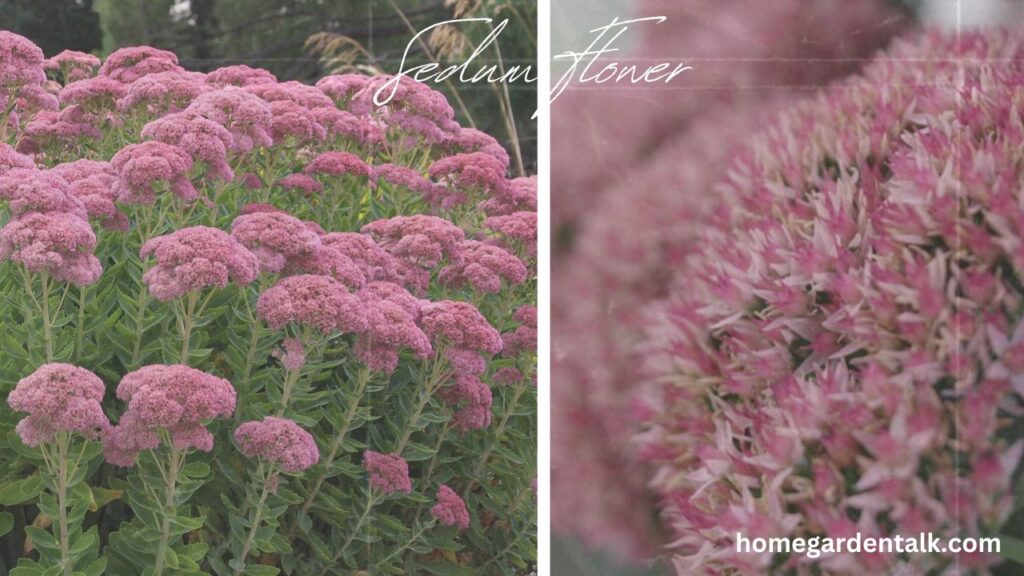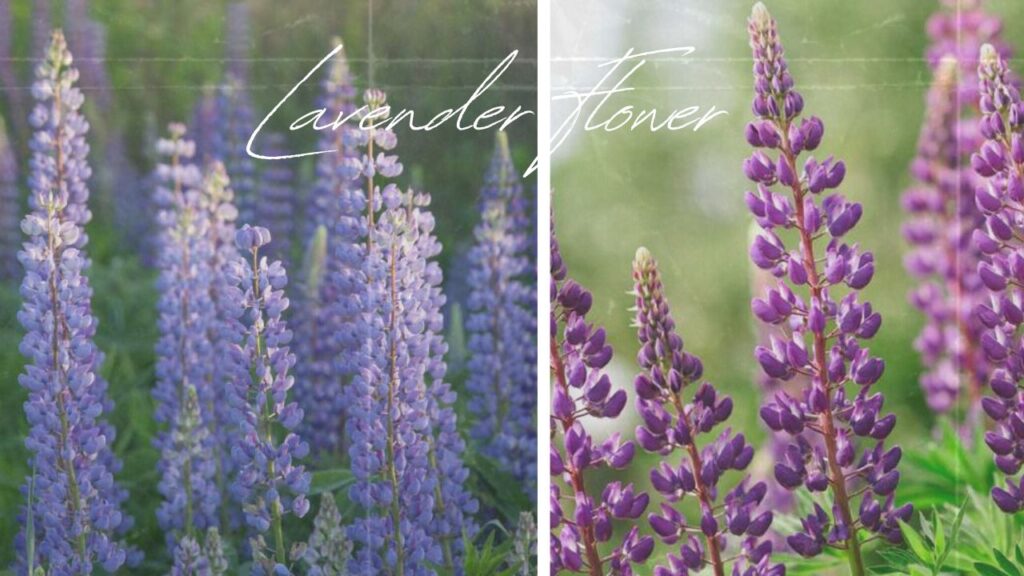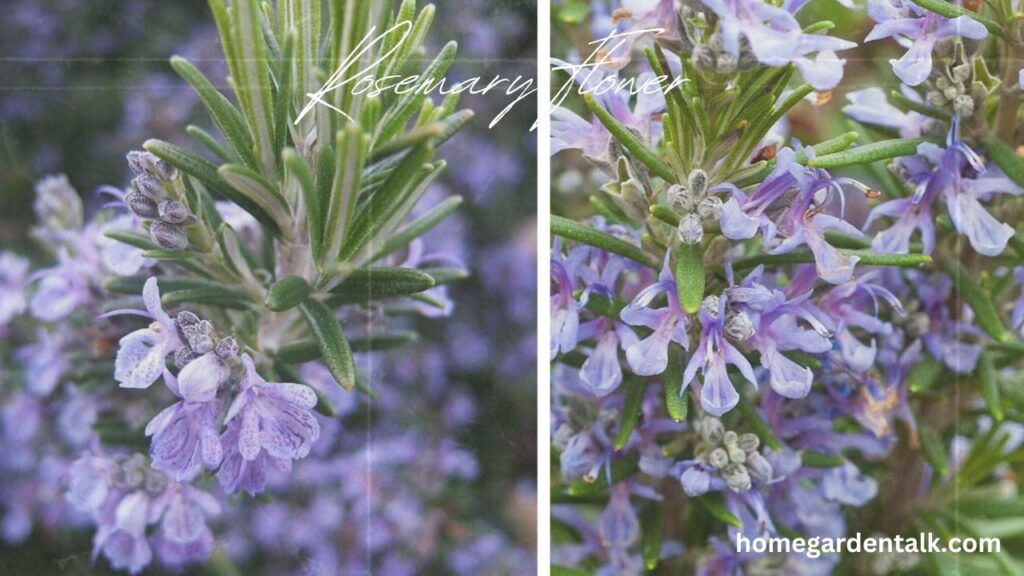1. Cosmos Flower

Family Name – Asteraceae
Height – 1.5 to 6 feet
Blooming Time – late April, May or early June
Note – Cosmos flower plant is native to Mexico with daisy like flowers that come in an array of colors. It is referred to by its genus name which was derived from the Greek word ‘kosmos’, which means order, harmony, or the world. Mexican priests cultivated the flower and named it Cosmos because of the evenly placed and orderly petals. Cosmos needs little water, no fertilizer and not much care, which makes it well suited to Utah’s climate. Cosmos prefers well-drained soil with average to poor fertility with a neutral to slightly alkaline pH.
2. Blanket Flower

Scientific Name – Gaillardia
Height – 1.5 to 3 feet
Blooming Time – June to September
Note – Blanket flower is a native perennial wildflower useful for adding species diversity in native plant seed mixes for rehabilitation of disturbed sites. It has utility as a cover and food source for pollinators, wildlife, and livestock. growing condition required full sun; dry to moist, well-drained soil; loamy to rocky and gravelly/sandy soil; drought tolerant once established.
3. Sedum Flower

Scientific Name – Crassulaceae
Height – 1 to 2 feet
Blooming Time – Mid August to early October
Note – Sedum is a perennial plant with thick, succulent leaves, fleshy stems and clusters of star shaped flowers. Light to medium, well drained soils are best but will grow on a wide range. Ph of 6.0-7.0. Plants should be planted in spring from rooted cuttings or liners. Do not plant too deep. The eyes should be seen just at ground level.
4. Black-Eyed Susan Flower

Scientific Name – Rudbeckia hirta
Height – 2 to 3 feet
Blooming Time – June to August
Note – Black-eyed Susan may be annual, biennial, or a short-lived perennial. t black-eyed Susan is planted with a no-till drill, conventional drill equipped with a small seed or wildflower seed box, or broadcast seeding. Black-eyed Susan is commonly added to native seed mixes for prairies, storm water ponds, lakeshores and roadsides.
5. Lavender Flower

Scientific Name – Lavandula
Height – 1 to 3 feet
Blooming Time – July to August
Note – Most lavender originates in the Mediterranean basin, in rocky, calcareous areas.
Lavender occurs over North Africa, the Mediterranean, Europe and Western India. True lavender yields 8 to 30 kg and lavandin 40 to 220 kg essential oil per hectare (ha),
and 500 to 1000 kg dried flower stems per hectare, depending on location, management and cultivar. French lavender is also known as fringed lavender because of its deeply serrated leaves. The entire plant is strongly aromatic and most cultivars have grey/green foliage with a light wooly texture.
6. Allium Flower

Scientific Name – Allium giganteum
Height – 3 to 5 feet
Blooming Time – June and July
Note – alliums make up the preponderance of the estimated 800 to 1,000 allium
species worldwide. Fall is the perfect time to plant alliums, which, like most temperate-zone bulbs, require a period of cold dormancy to grow well and bloom. You can plant them anytime before the ground freezes, burying the top of the bulb at a depth three times its diameter.
7. Rosemary Flower

Scientific Name – Salvia rosmarinus
Height – 3.3 to 6 feet
Blooming Time – October and lasts through March
Note – Rosemary is relatively easy to grow, making it a good choice for any home herb garden. Rosemary grows well in the interior of South Africa, right up to the foothills of the Maluti Mountains in the Eastern Free State. In herb gardens, it is often planted along with thyme, oregano, sage, and lavender. When planting, choose a variety that is suitable to the climate, soil, and desired use.

